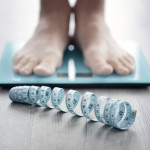I’ve had the good fortune of being physically healthy since I tested HIV positive in 1992. I can’t say the same of my mental state. Overcoming HIV stigma, even now, has been my greatest health challenge.
For many other long-term survivors, however, the virus has affected both their physical and mental health. In particular, some people living with HIV who survived by taking the early AIDS medications have paid a high price in the form of drug side effects and survivor’s guilt.
For most of us still here despite the virus, the reality is that we need to stay in long-term care.
One of the most difficult combinations of health challenges is when a visible ailment causes physical and mental distress. The lesions of Kaposi sarcoma are arguably the best example, but perhaps just as compelling are the effects of lipodystrophy, an umbrella term that covers both fat loss and fat accumulation.
Thankfully, lipo is not as common as it used to be. Lipoatrophy (fat loss) is especially rare among those who did not take older AIDS drugs. That said, it is mostly a condition that doesn’t go away, so folks who deal with it do so on an ongoing basis.
Lipohypertrophy (fat accumulation), however, is more common. As a result, learning what makes it different from general weight gain is important.
Fat buildup can occur in two ways: subcutaneous and visceral. Subcutaneous fat builds up beneath the skin and is soft and squishy. Visceral fat builds up inside the abdomen and surrounds the internal organs. It pushes up against the abdominal wall, which results in a hard belly. HIV-associated lipohypertrophy is distinguished by visceral fat and a hard belly.
This special issue of POZ Focus is dedicated to understanding lipodystrophy. Click here to learn about lipo basics and find answers to these questions: What is lipo? What causes it? And how can folks manage the condition?
We also spotlight a personal perspective. Lillibeth Gonzalez, our cover subject, lives with lipo. She is doing well, but living with HIV for 28 years has taken its toll. Click here to read more about her journey.
HIV-related lipodystrophy can lead to loss of self-esteem and social withdrawal. Lipo can be a constant reminder of living with HIV. It can reveal to others that you have the virus, which can deprive you of control over disclosing your status. Click here to read more on the stigma of lipo.
This print issue was adapted from the online version of the “Standing Tall” POZ Focus about living with lipodystrophy. Click here for the full version and to watch the related lipo episode of POZ at Home, a series of Zoom events that brings the HIV community together.







Comments
Comments